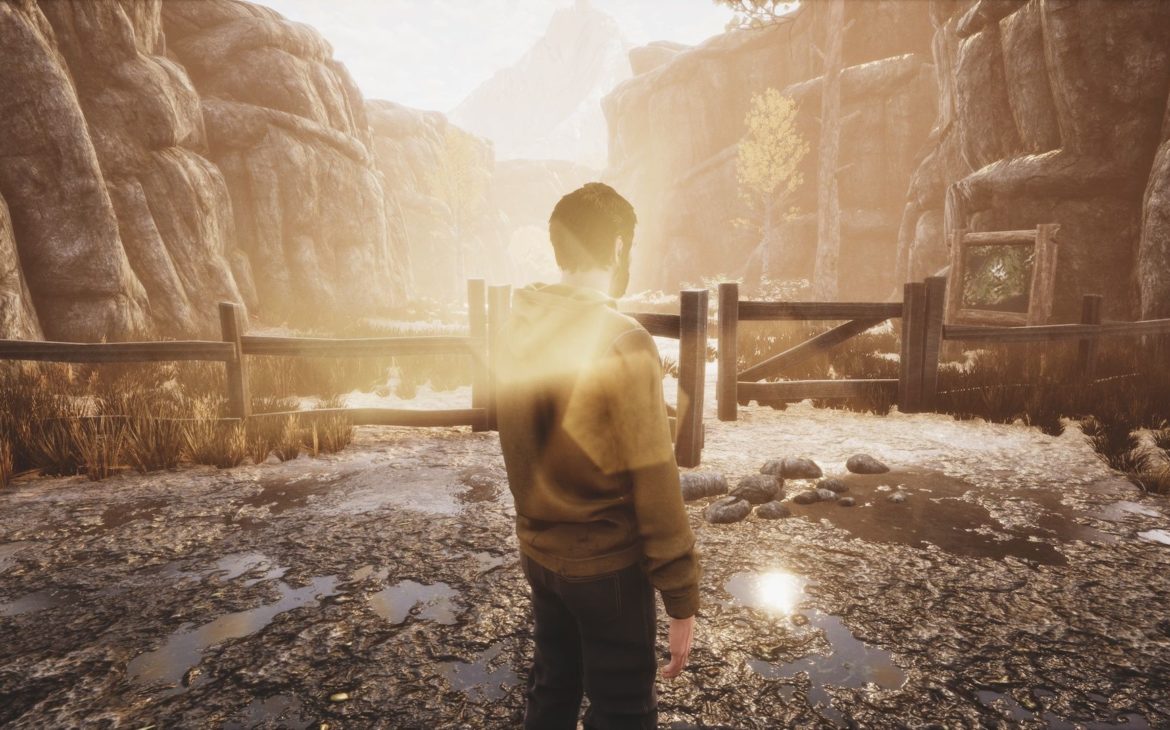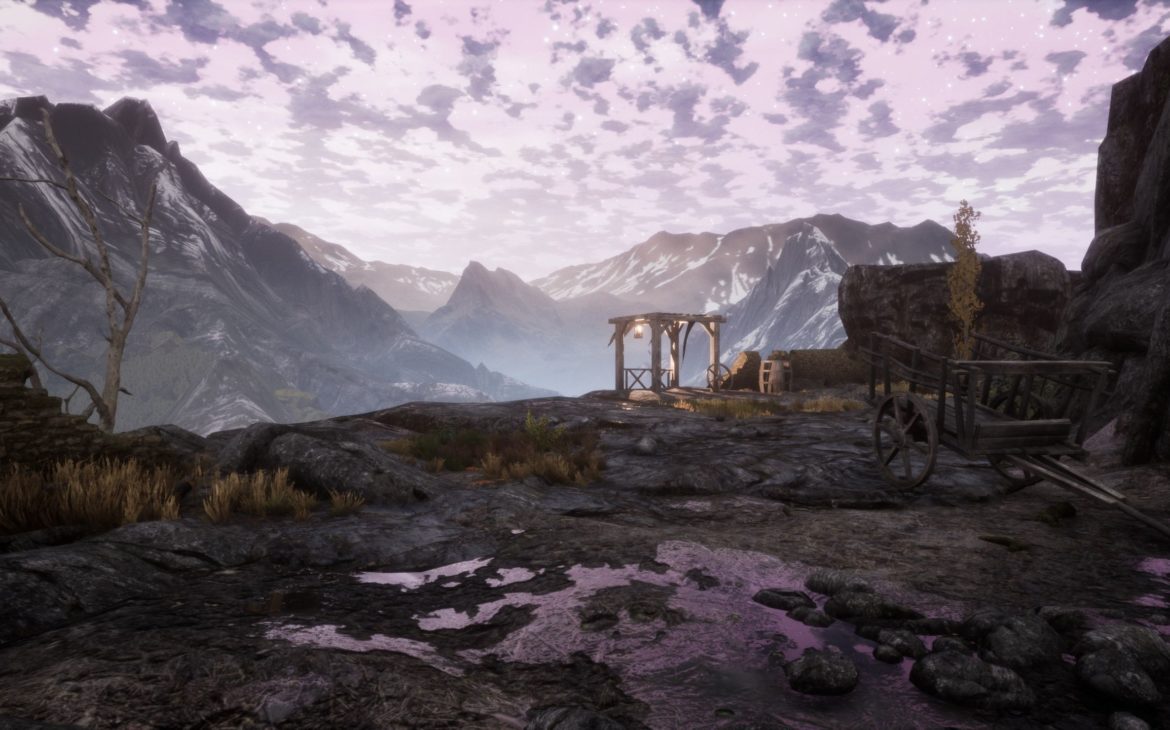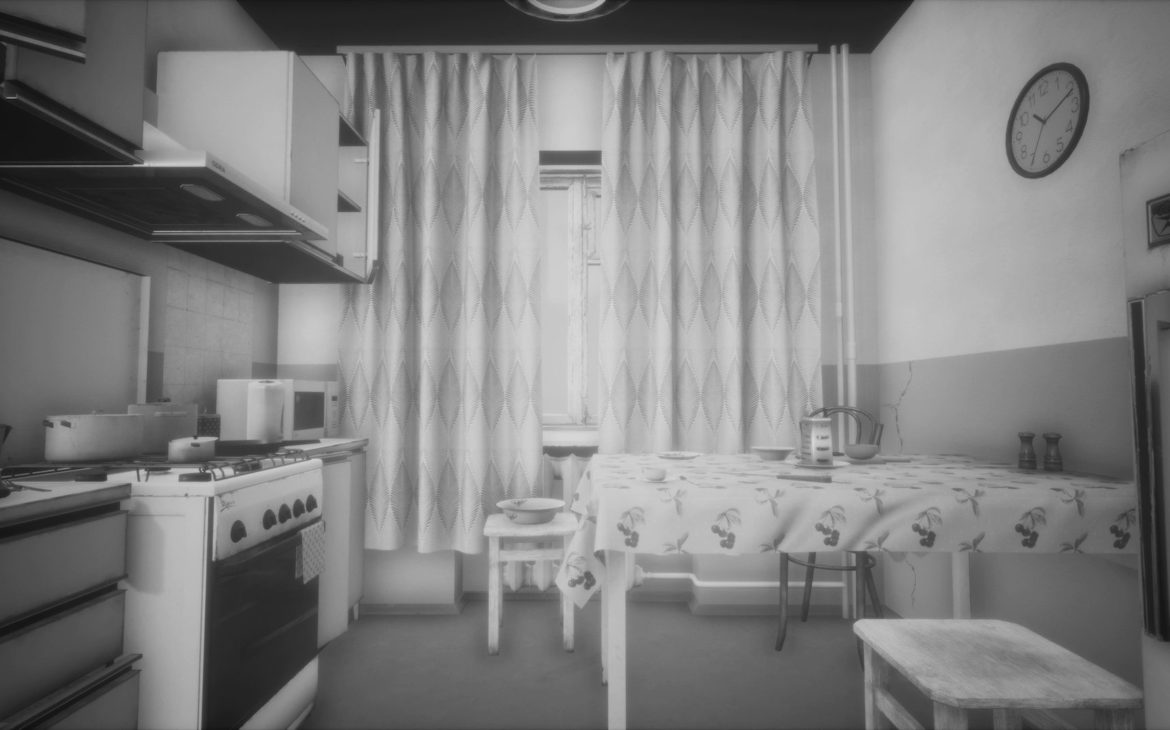The Dead Tree of Ranchiuna is a walking simulator that tries to explore the unfairness and inequalities of society. The Finger Guns Review.
Going Back To Your Roots
It’s difficult not to love the walking simulators that have come out in recent years. The genre itself has come out with some crackers, from Firewatch, Everybody’s Gone to the Rapture to What Remains of Edith Finch. There’s a real range in story telling starting to blossom via many different routes for what is essentially going to be the same formula as other games.
The best of the best are likely to include an enriching story from the beginning, lots to look at and explore, and depth to character. At the least, a good walking simulator does one of them extremely well.
At the start of The Dead Tree of Ranchiuna, you embody a male character named Andrei who’s coming from a Mountain Lodge. We find him exploring the depths between cliffsides, surrounded by rocky precipice, growing plantation and a dusty path. The Dead Tree of Ranchiuna leaves you little to no explanation of what your purpose is or why you are there, but as you walk on an internal monologue starts to play.

Deep Rooted
The movement initially feels quite clunky and stiff, almost like a slow robot dance. This does seem more smoother in certain areas but initially it does feel against the grain. As you move through the environment, the player will hear Andrei’s musings.
While you’re digesting his thoughts, you get to take in the environment which is very detailed and is delectably pretty. For someone playing from rainy England, it’s easy to feel transported to a rocky canyon. With moss scaling up the rock side and a dusk cloudy sky, it does achieve that immersion.
It does feel like Dead Tree of Ranchiuna takes the term ‘Walking Simulator’ a bit too literally at times. There were massive gaps where Andrei would fail to say anything. There were long periods of time where nothing happened, not even as much as a crow squawk. This is absolutely forgivable for a little time, but does end up feeling strange, especially at the beginning.
Andrei wants to return home and as he does, you will see apparitions of his past life. Coloured shadow’s play out old memories or conversations. The village is barren and the houses are quiet. Whilst walking around I would sometimes get stuck on things that were not there. Additionally, Andrei would be able to step up onto different heights in one area, but centimetres to your left you’d struggle to climb a smaller height.

Grassroots
A walking simulator should always keep the player entertained with what they are walking through. The Dead Tree of Ranchiuna makes a commendable effort with this and there are some differences in environment to explore. You’ll escape the initial rocky canyons to venture to some spring gardens, caves and cliff edges, as well as lakes and small huts. Each environment will last some time, with the exception of one or two grassy bloom area’s. The Dead Tree of Ranchiuna invites weather changes also, so it doesn’t feel like the same colour palette throughout the short 2-3 hour playthrough.
However, at times it is extremely easy to turn yourself around and get lost. The game also will not highlight to you this has happened, and because at times some environments can feel copy and pasted, this can be extremely frustrating as Andrei can only walk slowly or lightly jog around the location – even then it is at quite a slow pace! If you get yourself turned around, be prepared to hope you figured it out quick enough before spending 10 minutes walking back to where you were.
At times you would get to a hut that you could enter with a key. The design choice was a strange one for letting the player know that it was locked. When approaching the door, you would be met with a giant locked sign that looked almost identical to a ‘No Smoking’ sign. It would flash up in the middle of the screen in bright white, black and red. Which is completely out of place based on the design and feel around you.
A Seed in the Mind
As you continue your Journey, apparitions will continue to appear. Although it is not difficult to keep up with them (because they are few and far between it feels like waiting for a bus), it is difficult to work out the relevance of it all. You have two types of dialogue in The Dead Tree of Ranchiuna. The conversations from friends, family and others, and the internal monologues by Andrei.
The monologues feel very introspective and credit where credit is due, they do tell something of a story. You get character from Andrei through these monologues. Although Andrei isn’t talking about anything specific, such as his life or certain memories, you do get a sense he has been burned in some way. This did keep me intrigued throughout. As Andrei muses about change, love, guilt, emotion and romance, you can’t help but continuously question why he is there, or what he may have done. Maybe it is just my mind but at one point I went down an incredibly dark rooted thought.
Linked with this are then the actual memories and conversations that others have perhaps had about him. These leave more mysteries to unveil, but remain with little answer. There were only a handful of times where I understood fully the story of an apparition playing out over the course of multiple memories. Some memories felt completely disjointed and even after finishing the game, I still can’t justify why some even happened. Especially when other conversations could have told a more enriched and succinct story.
Having finished the story, I felt quite underwhelmed. I was saddened by this as the introspective monologues felt like they had purpose, but it didn’t feel like they came to a satisfying conclusion. It almost feels like an unfinished storyline, or one that was changed at last minute to fit a status quo. Due to the long pauses between apparitions it was difficult to care why someone didn’t like him or why he came back to the town or why he was even there. I felt like I had followed a path, a story of someone who was coming back home and that was it. I couldn’t quite work out if Andrei was being victimised or if he was guilty of something truly terrifying.
Like most walking simulators, The Dead Tree of Ranchiuna does not have any combat. However, it also lacks in the department of items to search for, story enriching reads, or just components that can add to the immersion.
The game would have felt much richer with more story, more character development and more responsiveness. I did get the impression sometimes the story was attempting to be profound just for the sake of it. For me, the ending didn’t fit the messages that they were delivering throughout the game. It felt random. I was genuinely a little confused when the game hits credits.
The voice acting, for what little there is throughout the game. is genuinely a highlight. That’s why I think I feel so disappointed with the outcome of the story which mismatches its portrayed to me as a player.
Branch off

There are some moments of interaction that need mentioning through; Locations seem to be cut off via gates, and each gate is met with a puzzle. There are 3 of these in total in the game. These puzzles are not particularly challenging as the player will be met with flip switches and lights and must achieve the right combination to unlock the door. The further into the game, the more switches a gate puzzle will have.
At times, when walking past a gate, or shortly after, Andrei will be sucked into what feels perhaps like a flashback. It will be an entirely new location such as a house. Each ‘Flashback’ got stranger. It was never explained why he was put there. At one point, I was locked in a room, opened a wardrobe and found a crowbar. I was never able to use the crowbar again or access it. It just disappeared from my imaginary pocket. Very strange.
From finding the key, I would then re-enter the location I was walking from, again with no explanation or emotional reaction to what had just happened. It really did feel out of place.
There was nothing to read, or do during these cut scenes, and if there were things to do it would be incredibly random. One mini flashback had me knock over about 20 gargoyles. Why? Couldn’t tell you. I couldn’t work out if this was a metaphor for him watching over everything, or a hint to the next location bridge puzzle. It all just felt… incomplete. I think I ended up talking to myself more about this game than the game actually speaks sense.
It is a real shame to write a review like this, because there were some really charming things with The Dead Tree of Ranchiuna and it showed some promise. As previously mentioned, the voice acting is great, there is also some attention to detail that really is commendable. Small design and graphical detail like gemstones in caves and the glare of the torch were wonderful – but I don’t play games to highlight how shiny a torch light can be.
The Dead Tree of Ranchiuna is a short walking simulator that may take the words ‘Walking Simulator’ a bit too literally. With a hollow story that feels unfinished, long pauses between any narrative development and repetitive design, it’s difficult to recommend this game when there are many others in the genre that do much more with a similar runtime.

The Dead Tree of Ranchiuna is available now on PS5 (review version), PS4, Xbox One, Xbox Series S|X, and Nintendo Switch.
Developer: EastAsiaSoft, Tonguc Bodur
Publisher: EastAsiaSoft, Tonguc Bodur
Disclaimer: In order to complete this review, we were provided with a promotional copy of the game. For our full review policy, please go here.
If you enjoyed this article or any more of our content, please consider our Patreon.
Make sure to follow Finger Guns on our social channels –Twitter, Facebook, Twitch, Spotify or Apple Podcasts – to keep up to date on our news, reviews and features.
